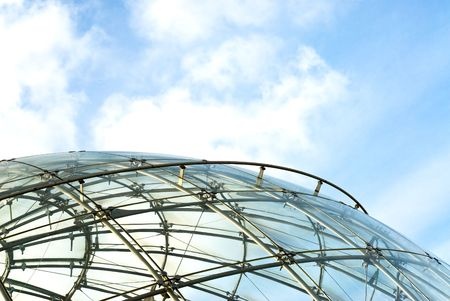Glass is everywhere around us, from the sleek facades of modern buildings to the screens we touch every day. To make it stronger, safer, and more versatile, it often undergoes one of two treatments: heat strengthening or chemical strengthening. Both methods improve durability, but they do so in very different ways. At Bent Glass Design, we use both approaches depending on the needs of each project, ensuring every piece of glass performs exactly as intended.
How Heat Strengthened Glass Works
Heat strengthening has been around for decades and remains one of the most common methods for improving the resilience of glass. In this process, the glass is heated to extremely high temperatures—typically above 600 degrees Celsius—and then cooled quickly in a controlled environment. The rapid cooling puts the surface of the glass under compression, which makes it much stronger than standard annealed glass.
Typically, the glass needs to be at least three millimeters thick for this process to be effective. The result is glass that is about twice as strong as untreated glass and more resistant to temperature changes and stress. One of the benefits of heat strengthened glass is that, unlike fully tempered glass, it does not shatter into tiny pieces when broken. Instead, it cracks in a safer pattern, staying largely intact. This makes it ideal for architectural projects such as skylights, curtain walls, and windows where strength and safety must coexist.
Recent improvements in equipment have made heat strengthening even more precise, resulting in fewer optical distortions and smoother surfaces. The process continues to be a dependable choice for large installations that need stability, strength, and consistent performance.
What Makes Chemically Strengthened Glass Different
Chemical strengthening takes a completely different approach. Instead of using heat, it relies on a chemical reaction to create compressive stress on the surface of the glass. The glass is submerged in a molten salt bath, usually made from potassium nitrate. During the process, smaller sodium ions in the glass are replaced with larger potassium ions, which tighten the structure at a molecular level.
This method is particularly useful for thinner glass that cannot handle the extreme temperatures of heat strengthening. Chemically strengthened glass can be made as thin as a smartphone screen or as thick as architectural panels up to six millimeters. It’s incredibly strong for its size, offering exceptional resistance to bending, scratching, and impact. Because the process doesn’t distort the surface, chemically strengthened glass also maintains a higher level of optical clarity and smoothness.
At Bent Glass Design, we use this process for applications that require precision and a flawless finish. It’s especially valuable for curved or bent glass installations where maintaining the natural beauty of the glass surface is essential.
Choosing the Right Type of Strengthened Glass
Both heat strengthened and chemically strengthened glass have their advantages, and the right choice depends on how and where the glass will be used. Heat strengthened glass is ideal for larger, structural installations like building facades, handrails, and skylights where thermal resistance and safety are key. Chemically strengthened glass, on the other hand, is better for projects that demand thin, lightweight, or visually perfect glass—such as digital displays, automotive applications, and custom bent designs.
The architectural and design world continues to push the limits of what glass can do. By pairing modern strengthening methods with coatings for UV protection, solar control, and energy efficiency, today’s glass can deliver both beauty and performance while contributing to sustainability goals.
Innovation and Craftsmanship at Bent Glass Design
At Bent Glass Design, we’ve spent years perfecting the art of shaping and strengthening glass to meet the highest standards of form and function. Whether you need glass that curves around the contours of a building or ultra-thin panels for a specialty product, our team has the experience and technology to make it happen.
We offer both heat and chemical strengthening services and can help you determine which process is best suited for your project’s goals. Our mission is to provide glass that doesn’t just look stunning but performs beautifully under real-world conditions.
To learn more about our capabilities or to discuss your next project, visit bentglassdesign.com or give us a call at 215.441.9101 today!



Can curved glass profiles be made with chemical strengthening process? We need 0.5 mm chemically strengthened curved glass.
It is possible to produce curved chemically strengthened glass. If call or send us an email with a little more detail about your project, we can provide you with a quote to produce such parts.
I found it very interesting when you talked about how you needed to break the glass into several small pieces to fully create tempered glass. My new home needs new windows, but we also have some pretty bad wind storms, so I’ve been considering ordering tempered glass replacements. Thank you for the information about how heat-strengthened glass is twice as strong as it would be otherwise.